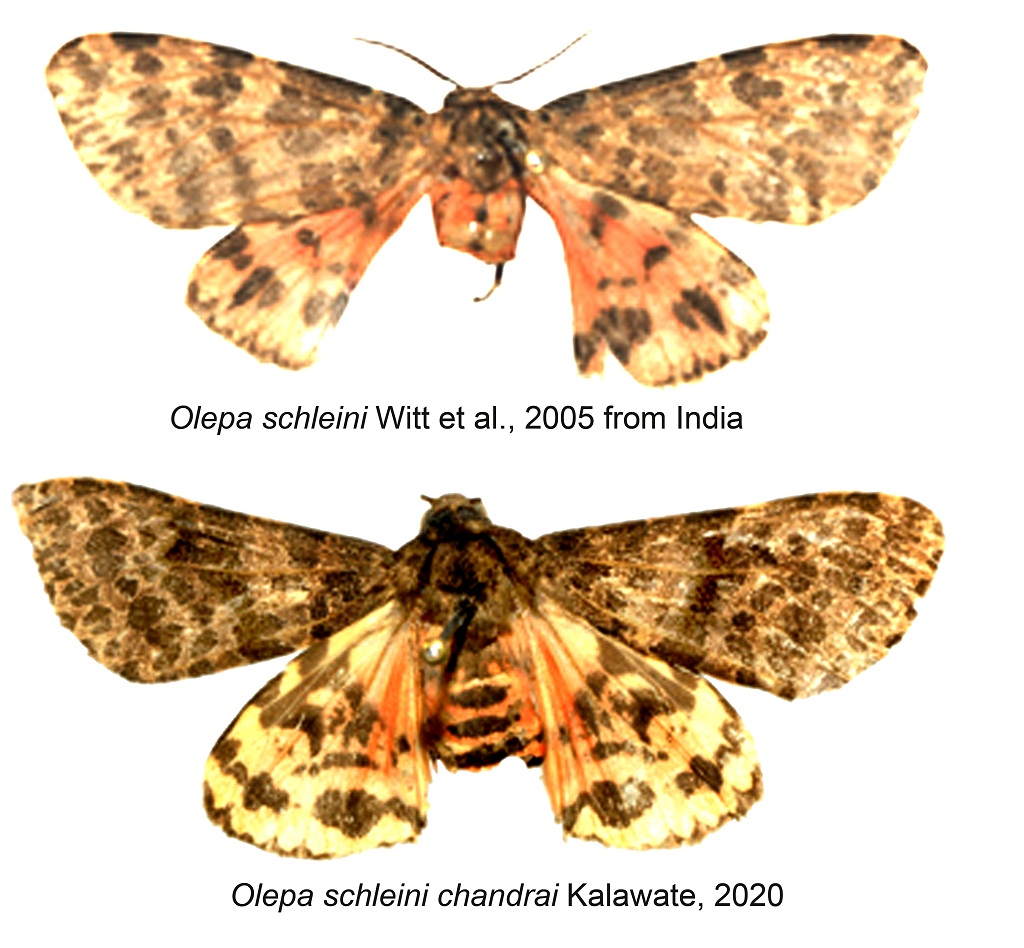Pune scientist discovers new species of tiger moth with help of DNA barcoding

Prajakta Joshi
Pune, June 29, 2020: A new record of a tiger moth species from the Indian subcontinent along with a new subspecies has been discovered in the northern Western Ghats by the Pune-based researcher Dr Aparna Kalawate and her team. This is the first-of-its-kind study in India wherein DNA barcoding was used along with morphological (outer characteristics) and genitalia studies for identification of species of moths.
Kalawate is presently working at Zoological Survey of India, Akurdi. Researchers Shital Pawara, A Shabnam and KP Dinesh were part of the team.
The moth genus Olepa Watson is known by 11 species from the world. Interestingly, one of the populations of the Olepa moth found in Nandurbar was matching with the morphological and male genitalia description with the species of Olepa schleini described from Israel. This species, earlier known to have been found in South and South-East Asia, was recorded from the Mediterranean Coastal Plain of Israel in 2005.
“This was thought to be doubtful, due to the contrasting zoogeographical collection localities. The geographies of India and Israel are very different. To understand this complexity, we conducted mt (mitochondrial) COI DNA Barcode studies on the collected samples to ascertain the species identities,” Kalawate said.
During the mt DNA Barcode studies, one of the populations of the collections of O. schleini from Nandurbar was a 100 percent match to the mt DNA Barcodes of the O. schleini species described from Israel. O. schleini from Israel and the present record of the species from peninsular India are separated by a minimum aerial distance of 4,000 km, as per the paper published by Kalawate.
Moreover, another population of O. schleini, the specimens of which were collected from Palghar, were found to be a new subspecies altogether.
“This other population of O. schleini from Palghar which is 0.6 percent genetically divergent from the O. schleini from Israel. The new subspecies has been recorded as Olepa schleini chandrai Kalawate, 2020. With the next level of studies, this could be elevated to a new species level as well,” Kalawate told Punekarnews.in
Need for research of the genus: Most of the species of the genus Olepa are morphologically cryptic (difficult to identify) and complex which hinders the taxonomic documentation process in deciphering the actual species diversity.
“For years, hardly anybody was working on this species. We have now started extensive research in the direction. We need to look for these moths only at night. So, hardly anyone was looking for them,” Kalawate said, adding that these moths are very important for ecological balance.
“These moths are important for pollination of several night flowers. Their larvae are also food for several birds,” she said.






